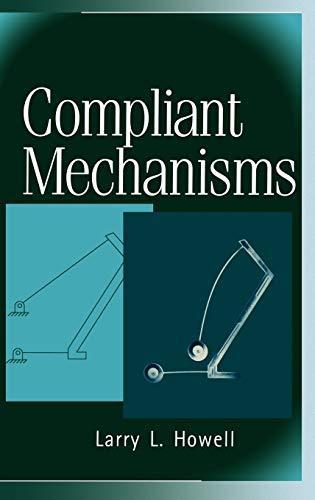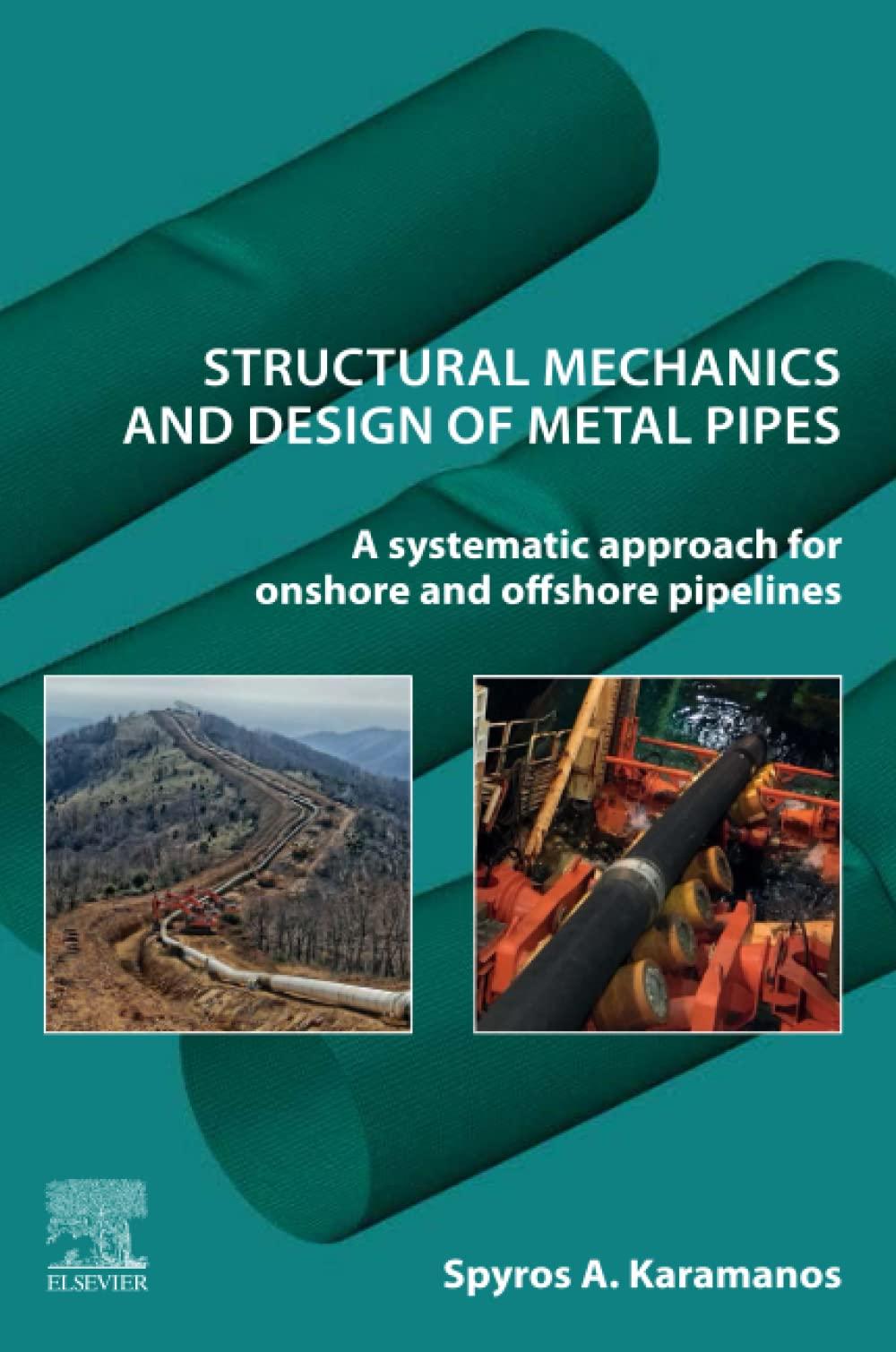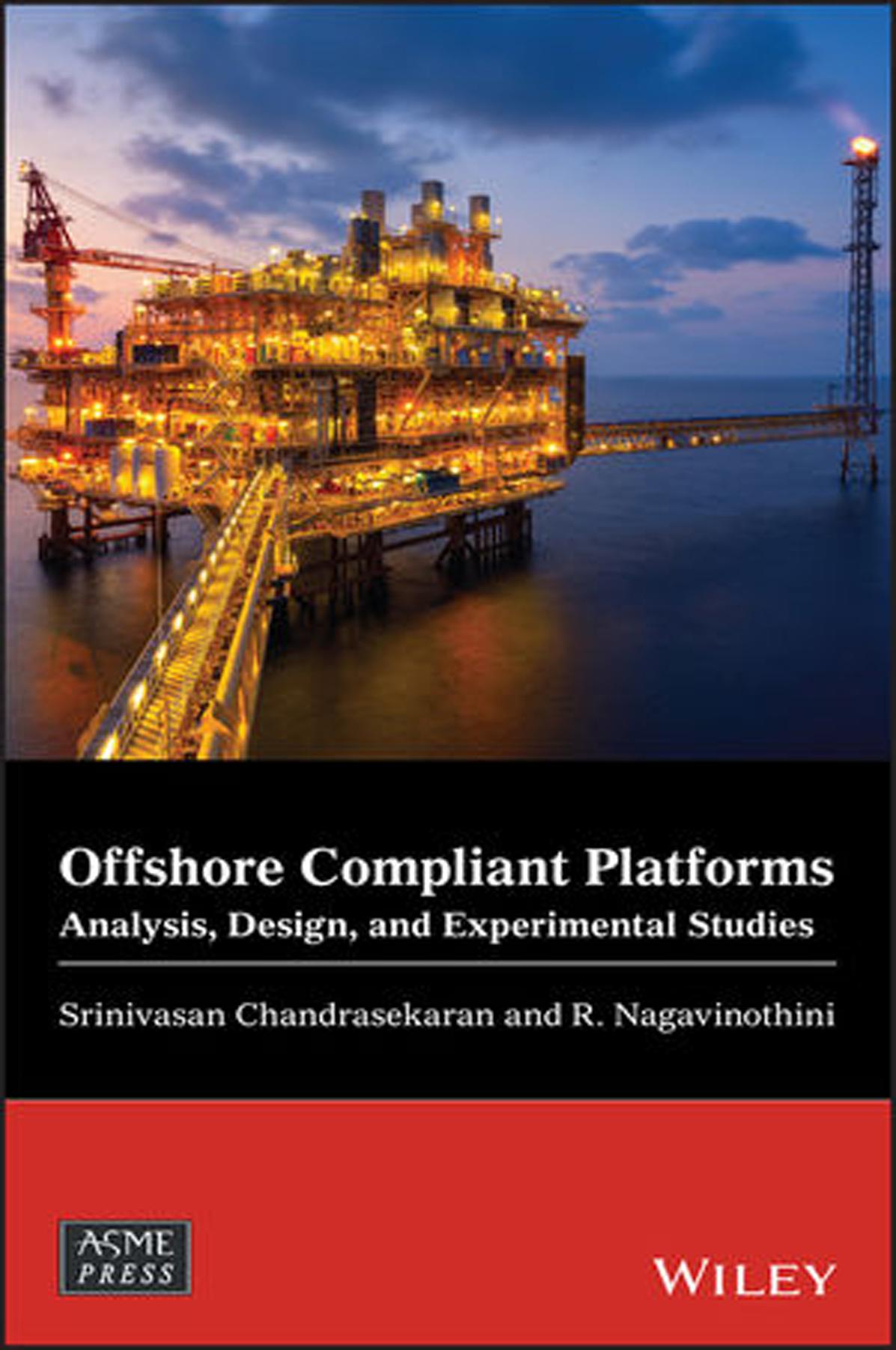Offshore Compliant Platforms
Analysis, Design, and Experimental Studies
Srinivasan Chandrasekaran
Department of Ocean Engineering
Indian Institute of Technology Madras
Tamil Nadu India
R. Nagavinothini
Department of Structures for Engineering and Architecture
University of Naples Federico II
Naples Italy
This Work is a co-publication between John Wiley & Sons Ltd and ASME Press
This edition first published 2020
© 2020 John Wiley & Sons Ltd
This Work is a co-publication between John Wiley & Sons Ltd and ASME Press
All rights reserved. No part of this publication may be reproduced, stored in a retrieval system, or transmitted, in any form or by any means, electronic, mechanical, photocopying, recording or otherwise, except as permitted by law. Advice on how to obtain permission to reuse material from this title is available at http://www.wiley.com/go/permissions.
The right of Srinivasan Chandrasekaran and R. Nagavinothini to be identified as the authors of this work has been asserted in accordance with law.
Registered Offices
John Wiley & Sons, Inc., 111 River Street, Hoboken, NJ 07030, USA
John Wiley & Sons Ltd, The Atrium, Southern Gate, Chichester, West Sussex, PO19 8SQ, UK
Editorial Office
The Atrium, Southern Gate, Chichester, West Sussex, PO19 8SQ, UK
For details of our global editorial offices, customer services, and more information about Wiley products visit us at www.wiley.com.
Wiley also publishes its books in a variety of electronic formats and by print‐on‐demand. Some content that appears in standard print versions of this book may not be available in other formats.
Limit of Liability/Disclaimer of Warranty
MATLAB® is a trademark of The MathWorks, Inc. and is used with permission. The MathWorks does not warrant the accuracy of the text or exercises in this book. This work’s use or discussion of MATLAB® software or related products does not constitute endorsement or sponsorship by The MathWorks of a particular pedagogical approach or particular use of the MATLAB® software.
In view of ongoing research, equipment modifications, changes in governmental regulations, and the constant flow of information relating to the use of experimental reagents, equipment, and devices, the reader is urged to review and evaluate the information provided in the package insert or instructions for each chemical, piece of equipment, reagent, or device for, among other things, any changes in the instructions or indication of usage and for added warnings and precautions. While the publisher and authors have used their best efforts in preparing this work, they make no representations or warranties with respect to the accuracy or completeness of the contents of this work and specifically disclaim all warranties, including without limitation any implied warranties of merchantability or fitness for a particular purpose. No warranty may be created or extended by sales representatives, written sales materials or promotional statements for this work. The fact that an organization, website, or product is referred to in this work as a citation and/or potential source of further information does not mean that the publisher and authors endorse the information or services the organization, website, or product may provide or recommendations it may make. This work is sold with the understanding that the publisher is not engaged in rendering professional services. The advice and strategies contained herein may not be suitable for your situation. You should consult with a specialist where appropriate. Further, readers should be aware that websites listed in this work may have changed or disappeared between when this work was written and when it is read. Neither the publisher nor authors shall be liable for any loss of profit or any other commercial damages, including but not limited to special, incidental, consequential, or other damages.
Library of Congress Cataloging‐in‐Publication Data
Names: Chandrasekaran, Srinivasan, author. | Nagavinothini, R., 1991– author.
Title: Offshore compliant platforms : analysis, design, and experimental studies / Srinivasan Chandrasekaran, Department of Ocean Engineering, Indian Institute of Technology Madras, Tamil Nadu, India, R. Nagavinothini, Department of Structures for Engineering and Architecture, University of Naples Federico II, Naples, Italy.
Description: First edition. | Hoboken, NJ : John Wiley & Sons, Inc., 2020. | Series: Wiley-ASME Press Series | Includes bibliographical references and index.
Identifiers: LCCN 2019050441 (print) | LCCN 2019050442 (ebook) | ISBN 9781119669777 (hardback) | ISBN 9781119669784 (adobe pdf) | ISBN 9781119669807 (epub)
Subjects: LCSH: Compliant platforms.
Classification: LCC TC1700 .C44 2020 (print) | LCC TC1700 (ebook) | DDC 627/.98–dc23
LC record available at https://lccn.loc.gov/2019050441
LC ebook record available at https://lccn.loc.gov/2019050442
Cover Design: Wiley
Cover Image: © paranyu pithayarungsarit/Getty Images
Set in 9.5/12.5pt STIXTwoText by SPi Global, Pondicherry, India
Printed and bound by CPI Group (UK) Ltd, Croydon, CR0 4YY
Contents
List of Figures ix
List of Tables xiii
Foreword by Professor Purnendu K. Das xv
Foreword by Dr. Atmanand N.D. xvii
Series Preface xix
Preface xxi
1 Common Compliant Platforms 1
1.1 Introduction 1
1.2 Tension Leg Platforms 8
1.3 Guyed Tower and Articulated Tower 19
1.4 Floating Structures 21
1.5 Response Control Strategies 24
1.5.1 Active Control Algorithm 25
1.5.2 Semi-Active Control Algorithm 25
1.5.3 Passive Control Algorithm 26
1.5.4 Friction Dampers 27
1.5.5 Metallic Yield Dampers 27
1.5.6 Viscous Fluid Dampers 27
1.5.7 Tuned Liquid Dampers 29
1.5.8 Tuned Liquid Column Damper 30
1.6 Tuned Mass Dampers 31
1.7 Response Control of Offshore Structures 36
1.8 Response Control of TLPs Using TMDs: Experimental Investigations 38
1.9 Articulated Towers 44
1.10 Response Control of ATs: Analytical Studies 48
1.11 Response Control of ATs: Experimental Studies 52
1.11.1 MLAT Without a TMD 53
1.11.2 MLAT with a TMD 56
2 Buoyant Leg Storage and Regasification Platforms 59
2.1 Background Literature 60
2.1.1 Buoyant Leg Structures 62
2.1.2 Floating Production and Processing Platforms 63
2.2 Experimental Setup 64
2.3 Experimental Investigations 65
2.4 Numerical Studies 72
2.5 Critical Observations 76
2.6 Stability Analysis of the BLSRP 85
2.7 Fatigue Analysis of the BLSRP 90
3 New-Generation Platforms: Offshore Triceratops 95
3.1 Introduction 95
3.2 Environmental Loads 96
3.2.1 Regular Waves 96
3.2.2 Random Waves 97
3.2.3 Wind 98
3.2.4 Currents 100
3.3 Fatigue Analysis of Tethers 101
3.4 Response to Regular Waves 104
3.5 Response to Random Waves 108
3.6 Response to Combined Actions of Wind, Waves, and Current 113
3.6.1 Deck Response 116
3.6.2 Buoyant Leg Response 120
3.6.3 Tether Tension Variation 122
3.7 Summary 123
4 Triceratops Under Special Loads 125
4.1 Introduction 125
4.1.1 Ice Load 126
4.1.2 Impact Load Due to Ship Platform Collisions 129
4.1.3 Hydrocarbon Fires 131
4.2 Continuous Ice Crushing 134
4.2.1 The Korzhavin Equation 135
4.2.2 Continuous Ice Crushing Spectrum 136
4.3 Response to Continuous Ice Crushing 138
4.3.1 Response to Ice Loads 139
4.3.1.1 Deck and Buoyant Leg Responses 139
4.3.1.2 Tether Response 140
4.3.2 Effect of Ice Parameters 140
4.3.2.1 Ice Thickness 140
4.3.2.2 Ice Crushing Strength 143
4.3.2.3 Ice Velocity 144
4.3.3 Comparison of Ice- and Wave-Induced Responses 145
4.4 Response to Impact Loads 147
4.4.1 Parametric Studies 151
4.4.1.1 Indenter Size 151
4.4.1.2 Collision Zone Location 152
4.4.1.3 Indenter Shape 153
4.4.1.4 Number of Stringers 154
4.4.2 Impact Response in the Arctic Region 154
4.5 Deck Response to Hydrocarbon Fires 156
4.6 Summary 158
5 Offshore Triceratops: Recent Advanced Applications 161
5.1 Introduction 161
5.2 Wind Turbines 161
5.3 Wind Power 163
5.4 Evolution of Wind Turbines 163
5.5 Conceptual Development of the Triceratops-Based Wind Turbine 164
5.6 Support Systems for Wind Turbines 164
5.6.1 Spar Type 165
5.6.2 TLP Type 165
5.6.3 Pontoon (Barge) Type 165
5.6.4 Semi-Submersible Type 166
5.6.5 Triceratops Type 166
5.7 Wind Turbine on a Triceratops 166
5.8 Response of a Triceratops-Based Wind Turbine to Waves 166
5.8.1 Free-Decay Response 166
5.8.2 Response to Operable and Parked Conditions 169
5.8.3 Effect of Wave Heading Angles 170
5.8.4 PSD Plots 171
5.8.5 Tether Response and Service Life Estimation 172
5.9 Stiffened Triceratops 173
5.9.1 Preliminary Design 173
5.9.2 Response to Wave Action 175
5.9.3 Effect of Wave Direction 177
5.10 Triceratops with Elliptical Buoyant Legs 179
5.10.1 Conceptual Development 180
5.10.2 Response of a Triceratops with Elliptical Buoyant Legs to Wave Action 182
5.11 Summary 186
Model Test Papers 187 References 209 Index 223
List of Figures
1.1 A typical tension leg platform. 9
1.2 TLP mechanics. 10
1.3 Active control strategy. 25
1.4 Semi‐active control strategy. 26
1.5 Block diagram for passive control strategy. 26
1.6 Pall friction damper. 27
1.7 Metallic yield damper. 28
1.8 Viscous fluid damper. 28
1.9 Tuned liquid damper: (a) circular; (b) rectangular. 29
1.10 Tuned liquid column damper. 30
1.11 Tuned mass damper. 32
1.12 Schematic diagram of an idealized system. 32
1.13 Schematic diagram of a spring‐mass system with a TMD. 33
1.14 Mass used in the TMD. 39
1.15 Response of a TLP and TMD (μ = 1.5%). 41
1.16 Response of a TLP and TMD (μ = 3.0%). 41
1.17 Surge RAO of a TMD. 42
1.18 Comparison of surge response (HS = 8 m; TP = 12 seconds). 42
1.19 Comparison of surge response (HS = 8 m; TP = 16 seconds). 43
1.20 Comparison of surge response (HS = 8 m; TP = 20 seconds). 43
1.21 Comparison of surge response (HS = 8 m; TP = 32.5 seconds). 44
1.22 Comparison of pitch response (HS = 8 m; TP = 12 seconds). 45
1.23 Comparison of pitch response (HS = 8 m; TP = 16 seconds). 45
1.24 Comparison of pitch response (HS = 8 m; TP = 20 seconds). 46
1.25 Comparison of pitch response (HS = 8 m; TP = 32.5 seconds). 46
1.26 Articulated tower. 47
1.27 Analytical model. 49
1.28 Variation of responses for different frequency ratios. 51
1.29 Variation of responses for different frequency ratios with a TMD. 52
List of Liguri x
1.30 Variation of responses for different frequency and mass ratios with a TMD. 52
1.31 Geometric details of the model. 54
1.32 Model of a TMD. 54
1.33 Free‐vibration time history. 55
1.34 Surge response of a MLAT without a TMD. 55
1.35 Surge RAO for TMD‐1. 56
1.36 Surge RAO for TMD‐2. 56
1.37 Surge RAO for TMD‐3. 57
1.38 Comparison of RAOs for 3 cm wave height. 57
1.39 Comparison of RAOs for 5 cm wave height. 58
1.40 Comparison of RAOs for 7 cm wave height. 58
2.1 Schematic diagram of the BLSRP installed in a wave flume. 64
2.2 Experimental setup and arrangements: (a) side view; (b) hinged joint; (c) roller at the base plate for guiding the mooring line; (d) load cell; (e) ratchet mechanism for adjusting the tension; (f ) plan arrangement. 66
2.3 Orientation of the BLSRP for the wave heading angle. 69
2.4 Response of the BLSRP (0°, 0.1 m wave height). 70
2.5 Details of the hinged joint in the numeric model. 73
2.6 Response of the BLSRP (30°, 15 m). 74
2.7 Tether tension variations in mooring lines. 76
2.8 Power spectral density plots of buoyant leg 1 (0°, 6 m, 10 seconds). 78
2.9 Power spectral density plots of the deck (0°, 6 m, 10 seconds). 80
2.10 Numerical model of the BLSRP (normal case). 87
2.11 Numerical model of the BLSRP with postulated failure. 89
2.12 Dynamic tether tension variation in postulated failure cases. 91
2.13 Mathieu stability for the BLSRP in postulated failure cases. 92
3.1 Typical regular wave profile (H = 2 m, T = 5 s). 96
3.2 PM spectrum for different sea conditions. 99
3.3 Two‐dimensional random wave profile. 99
3.4 API spectrum plot for different wind velocities. 101
3.5 Wind‐generated current velocity profile. 102
3.6 Service life estimation methodology. 103
3.7 Triceratops model. 104
3.8 Experimental model of a stiffened triceratops. 105
3.9 Plan of the triceratops. 105
3.10 RAOs of the deck and buoyant legs with regular waves. 107
3.11 Deck response given different wave heading angles. 109
3.12 Tether tension variation in rough sea conditions. 110
3.13 Deck surge and heave PSD plots in very high sea conditions. 111
3.14 Pitch response of the deck and buoyant legs in very high sea conditions. 112
3.15 Maximum deck response in very high sea conditions. 114
3.16 Tether tension spectrum with very high sea conditions. 115
3.17 Maximum tether tension in very high sea conditions. 115
3.18 Deck response with high sea conditions (w – waves, w + w – waves+wind, w + w + c – waves+wind+current). 117
3.19 Phase plots in the surge DOF with very high sea conditions. 119
3.20 Buoyant leg response with high sea conditions. 120
3.21 Tension spectrum with very high sea conditions. 123
4.1 Random ice force and vibration of the structure. 128
4.2 True stress–strain curve of AH36 grade steel. 130
4.3 Different shapes of indenters. 131
4.4 Time–temperature curves for different fire conditions. 132
4.5 Reduction factors for yield strength, proportional limits, and linear elastic range for carbon steel. 133
4.6 Variations in the thermal conductivity of carbon steel. 133
4.7 Variations in the specific heat of carbon steel. 134
4.8 Variations in the thermal strain of carbon steel. 134
4.9 Spectral density plot given different ice velocities. 137
4.10 Spectral density plot given different ice forces. 137
4.11 Ice force–time history. 138
4.12 PSD plots for normal ice sea conditions with ice load on two buoyant legs. 141
4.13 PSD plots of tether tension variation in normal sea conditions. 143
4.14 Total deck response for different ice thicknesses. 144
4.15 Total deck response for different ice crushing strengths. 145
4.16 Total deck response for different ice velocities. 146
4.17 PSD plots of the deck in open water and ice‐covered load cases. 147
4.18 Methodology of impact analysis. 148
4.19 Numerical model of buoyant legs and indenters. 149
4.20 Force versus nondimensional deformation curve. 150
4.21 Deck surge responses for impact loads on buoyant leg 1. 150
4.22 Force–deformation curves for different indenter sizes. 151
4.23 Force–deformation curves for different impact locations. 152
4.24 Force–deformation curves for different indenter shapes. 153
4.25 Force–deformation curves for different numbers of stringers. 154
4.26 Force–deformation curve of buoyant legs at different temperatures. 155
4.27 Deck plate of a triceratops. 156
4.28 Scale deck plate model. 157
4.29 Hydrocarbon fire cases. 158
4.30 Temperature variations in plates and stiffeners. 159
5.1 Numerical model of a triceratops with a wind turbine. 168
5.2 Pitch RAO of the triceratops. 168
5.3 PSD plot of the surge free‐decay response. 169
5.4 PSD plot of the roll free‐decay response. 169
5.5 Frequency response to operable and parked conditions. 170
5.6 PSD plots for different DOF 172
5.7 Dynamic tether tension variation. 172
5.8 Plan and elevation of a stiffened buoyant leg. 174
5.9 Fabricated model of a stiffened buoyant leg. 176
5.10 Fabricated model of a ball joint. 177
5.11 Surge, heave, and pitch RAOs of the deck and buoyant legs with 0° incident waves. 178
5.12 Surge, heave, and pitch RAOs of the deck and buoyant legs with 90° waves. 179
5.13 Surge, heave, and pitch RAOs of the deck and buoyant legs with 180° waves. 180
5.14 Effect of wave direction on the stiffened triceratops. 181
5.15 Cross section of the buoyant legs. 182
5.16 Plan view of the triceratops with circular and elliptical buoyant legs. 183
5.17 Total force–time history, given high sea conditions. 185
List of Tables
1.1 Major fixed platforms constructed worldwide (as of 2017). 3
1.2 Tension leg platforms constructed worldwide. 20
1.3 Properties of a TMD in the model and prototype (scale 1 : 100). 39
1.4 Results of free oscillation tests of the TLP model. 40
1.5 RMS value of surge responses in the presence of random waves. 44
1.6 RMS value of pitch responses in the presence of random waves. 47
1.7 Mechanical properties of the Perspex material used for the model. 53
2.1 Structural details of the BLSRP. 67
2.2 Natural periods and damping ratios. 68
2.3 Maximum response of the BLSRP model (0°, 0.1 m). 72
2.4 Maximum response amplitudes (numerical studies; 6 m wave height). 83
2.5 Geometric properties of the BLSRP for the stability study. 88
2.6 Maximum tension amplitude in the tethers in postulated failure cases. 90
2.7 Mathieu parameters in postulated failure cases. 92
2.8 Fatigue life (rounded off ) of tethers under eccentric loading 93
3.1 Characteristics of random sea conditions. 97
3.2 Comparison of responses to regular waves. 108
3.3 Deck response to different sea conditions. 110
3.4 Comparison of deck responses to high sea conditions. 112
3.5 Tension variation and service life of tethers of buoyant leg 1. 115
3.6 Characteristics of sea conditions. 116
3.7 Tether tension variation with combined actions of wind, waves, and current. 122
4.1 Mechanical properties of marine DH36 steel. 131
4.2 Ice sea conditions. 138
4.3 Deck response to different sea conditions. 139
4.4 Deck response to open water and ice‐covered load cases. 146
4.5 Collision speed and impact duration. 148
4.6 Mechanical properties of DH36 steel at a 0.001/s strain rate. 155
5.1 Properties of the triceratops‐based wind turbine. 167
5.2 Variation in RAO with changes in the wave heading angle. 171
5.3 Service life estimation of the triceratops. 173
5.4 Geometric parameters of the offshore triceratops. 175
5.5 Mass properties of the triceratops. 176
5.6 Response of the triceratops given rough sea conditions. 184
Foreword by Professor Purnendu K. Das
Advances in technology and industry maturity make offshore wind an increasingly attractive investment. Although still relatively expensive, it has advantages of being deployable sooner and faster than many other nonrenewable energy sources. Compared to other renewable sources, offshore wind turbine technology has advantages in scalability. Recent growth and innovation have driven costs to more competitive levels and significant future investments in Europe and globally. Current drawbacks include high capital costs due to the large fabrication, installation, and maintenance costs involved; it is estimated that over 20% of total project costs are directly linked to the foundation structures and their construction.
The book describes the detailed analysis and design procedures of compliant offshore structures with a special focus on new‐generation platforms like the triceratops and buoyant leg storage and re‐gasification platforms. The book aims to describe the detailed preliminary design of a triceratops in ultra‐deep water. A detailed analysis under environmental loads that are inherent in offshore locations, such as waves, wind, and currents, is presented. A new methodology for the dynamic analysis of a triceratops under ice loads, predominantly in ice‐covered regions, is also explained, with detailed parametric studies. Because offshore platforms are also prone to accidental loads arising due to fires and ship–platform collisions, the detailed dynamic analysis under such loads discussed in the book will be of great assistance to both researchers and practicing structural consultants.
I hope this book will serve as a ready reference for engineers in this field who want to study floating wind turbines structures. I wish the book all success.
Professor Purnendu K. Das B.E., M.E., Ph.D., C.Eng, CMar.Eng, FRINA, FIStruct.E, FIMarEST Director ASRANet Ltd. Glasgow
Ex‐Professor of Marine Structures, University of Strathclyde, Glasgow, UK
Visiting Professor, University of Montenegro, Montenegro
Foreword by Dr. Atmanand N.D.
The use of renewable energies is vital for addressing issues due to global warming and climate change. But the cost of production of renewable energy has not hit an all‐time low as yet, and oil and gas continue to be the major sources of energy.
In the recent past, offshore oil drilling and production platforms have begun moving toward ultra‐deep water due to the depletion of oil and gas resources near shore. In addition, the arctic region is opening for new offshore platforms. This necessitates a novel geometric form with reduced response to extreme waves and, in turn, the extreme loading conditions that prevail in ultra‐deep water. Compliant offshore platforms are highly popular due to their form‐‐dominant design characteristics. However, their significant hull motion in deepwater conditions and high sea conditions leads to a need for alternate design procedures, because the present ones are not suitable for ultra‐deep water. Detailed analysis and design procedures for new‐generation offshore platforms are frequently debated in conference proceedings. But this book demystifies the technological know‐how by presenting a lucid explanation that is useful and innovative. For example, the discussion of a new methodology for the dynamic analysis of a triceratops under ice loads in ice‐covered regions, with detailed parametric studies, is noteworthy. Such structures are prone to accidental loads arising due to fires and ship–platform collisions, so both designers and researchers should be familiar with the detailed dynamic analysis under such loads. The comprehensive picture presented in this book of the dynamic response behavior of this novel platform under different types of loads is scarce elsewhere in the literature.
This book will serve as a resource for understanding the basic structural behavior of new‐generation complex offshore platforms and will help graduate students understand analysis methodologies that otherwise would have to be painstakingly collected from many publications. In addition, this book will be useful for practicing engineers and research scholars who wish to understand the response behavior of structures with novel geometry under combinations of extreme loads.
The principal author, Srinivasan Chandrasekaran, is a well‐known academician and has authored 14 textbooks in the highly specialized area of offshore engineering. His web‐based courses on offshore structural engineering are very popular and serve as reference material to teach this complex subject at both the undergraduate and post‐graduate levels of engineering programs in various disciplines including civil, mechanical, aerospace, naval architecture, etc. I am sure any offshore engineer will find this book to be a wealth of resources.
Dr. Atmanand N.D.
Director, Chair IOCINDIO (UNESCO)
National Institute of Ocean Technology
Chennai India
Series Preface
The Wiley-ASME Press Series in Mechanical Engineering brings together two established leaders in mechanical engineering publishing to deliver high-quality, peer-reviewed books covering topics of current interest to engineers and researchers worldwide.
The series publishes across the breadth of mechanical engineering, comprising research, design and development, and manufacturing. It includes monographs, references and course texts.
Prospective topics include emerging and advanced technologies in Engineering Design; Computer-Aided Design; Energy Conversion & Resources; Heat Transfer; Manufacturing & Processing; Systems & Devices; Renewable Energy; Robotics; and Biotechnology.
Preface
This book, Offshore Compliant Platforms: Analysis, Design, and Experimental Studies, describes detailed analysis and design procedures for compliant offshore structures, with a special focus on new‐generation platforms like the triceratops and buoyant leg storage and regasification platforms. While the conceptual development of conventional platforms like tension leg platforms (TLPs), spar platforms, and articulated towers is presented briefly, the detailed descriptions of the design and development of new‐generation platforms discussed in the book are highly novel and still in the preliminary stages of study in the existing literature. Compliant offshore platforms are favorable candidates for deepwater oil and gas production systems due to their form‐dominant design characteristics. But significant compliancy causing flexible motion in the horizontal plane requires special attention from designers because it poses critical challenges when platforms are commissioned in ultra‐deep water. Therefore, a novel geometric form with reduced responses is a vital necessity to accommodate extreme loading.
This book presents a detailed analysis and design of one such novel platform: the triceratops. The authors believe that it will serve as a good reference guide for the effective design of triceratops platforms, as the clear numerical and experimental studies presented in the book will help readers understand the platforms’ dynamic response behavior. A new methodology for the dynamic analysis of a triceratops under ice loads in ice‐covered regions is also explained with detailed parametric studies. Offshore platforms are also prone to accidental loads arising due to fires and ship–platform collisions; the detailed dynamic analysis under such loads that is presented in the book will be of great interest to both researchers and practicing structural consultants.
In addition, this book will aid in understanding the platform’s structural behavior in terms of its response, service life, and design. The book will serve as a resource regarding the basic structural behavior of complex offshore structures; it will help graduate students understand analysis methodologies and will also help researchers understand the dynamic response of such structures. Readers will
learn about new structural geometries of offshore platforms and different methods of analysis for assessing their performance under special loads. The discussion of fatigue analysis and predicting service life will also help professionals during the preliminary and detailed design stages of offshore platforms. This book can serve as reference material for both academicians and offshore practicing professionals.
Both senior undergraduate and post‐graduate students in the disciplines of civil, mechanical, aerospace, structural, offshore, and ocean engineering; applied mechanics; and naval architecture will find this book very useful as a standard classroom reference for analysis and design of special structures. In addition, this book will be useful for practicing engineers and research scholars studying the response behaviors of structures with novel geometry under combinations of extreme loads.
The experimental studies and numerical analyses discussed in the book are the outcomes of research work carried out recently by the authors and research scholars supervised by Srinivasan Chandrasekaran. All discussions, interpretations, and concepts conceived during the detailed research work carried out by the research scholar team are sincerely acknowledged. Administrative support extended by the Centre for Continuing Education (CCE), Indian Institute of Technology, Madras in preparing this manuscript is sincerely acknowledged.
Srinivasan Chandrasekaran R. Nagavinothini
Common Compliant Platforms
Summary
This chapter presents details of the structural geometry of compliant offshore platforms while emphasizing the design and development of these platforms rather than of fixed platforms. Details of investigations carried out on the response control of a tension leg platform (TLP) and an articulated tower are presented. This chapter also presents various control strategies that are commonly deployed for response control of structures subjected to lateral loads while presenting detailed applications of tuned mass dampers (TMDs) in offshore structures. Experimental investigations and numerical analyses, reported by R. Ranjani (2015, “Response Control of Tension Leg Platform Using Tuned Mass Damper,” PhD thesis, IIT Madras, India) and Prof. Deepak Kumar (Dept. of Ocean Engineering, IIT Madras, India) are sincerely acknowledged by the authors.
1.1 Introduction
While it is a common understanding that structural forms are conceived to counteract the applied loads acting on them, it may not be completely true in the context of offshore structures. This is due to the basic fact that offshore structures are designed to alleviate the encountered environmental loads based on their geometric form and not by the strength of the materials and structural properties based on the cross‐section of the members. On the other hand, offshore structures are essentially form‐dominant. Therefore, rigid‐supported structural systems, which are conventionally good to transfer the applied loads to the foundations, are not attractive candidates for offshore structures. A few factors that influence
Offshore Compliant Platforms: Analysis, Design, and Experimental Studies, First Edition. Srinivasan Chandrasekaran and R. Nagavinothini.
© 2020 John Wiley & Sons Ltd.
This Work is a co-publication between John Wiley & Sons Ltd and ASME Press.
the choice of the geometric form of offshore structures are a structural form with a stable configuration, and a geometric form with low installation, fabrication, and decommissioning costs; that leads to lower capital expenditures (CAPEX) and a higher return on investment (ROI). The result is an earlier start for production and greater mobility, and a platform that requires the least intervention so that uninterrupted production can take place.
Offshore structures are grouped as fixed, compliant, and floating types, based on the boundary conditions of their station‐keeping characteristics. Fixed platforms are further categorized as jacket platforms, gravity platforms, and jack‐up rigs. Compliant platforms are further categorized as guyed towers, articulated towers, and tension leg platform (TLPs). Floating platforms are further categorized as semi‐submersibles, floating production units (FPUs), floating storage and offloading (FSO), floating production storage and offloading (FPSO), and spar. While fixed platforms are designed to remain insensitive to lateral loads that arise from waves, wind, currents, and earthquakes, these platforms are expected to resist the encountered loads using both their material strength and structural redundancy. A strength‐based design approach is more popular for use when designing such platforms, as they exhibit very low displacement under lateral loads. These structural forms are also stable due to their massive weight, which is an advantageous design factor. However, with regard to the other factors that influence the choice of the structural forms of offshore structures, as explained earlier, fixed platforms are least preferred for deepwater construction. Table 1.1 shows a list of fixed platforms constructed worldwide (Srinivasan Chandrasekaran 2017).
It is interesting to note that offshore engineers gradually realized that restricting the motion of the platform by making it fixed to the seabed was not necessary. Instead, conceptual developments were focused on flexible structural forms and gave birth to compliant structures. Further, fixed platforms became increasingly expensive and difficult to commission in greater water depths. Hence, a modified design concept was evolved in offshore structural forms, which focused on flexible systems; it gave rise to compliant offshore structures. The word compliance refers to flexible systems. Fixed platforms were designed to encounter the environmental loads with their strength and fixity (rigidness, obtained from both large member dimensions and fixity to the seabed).
On the other hand, compliant‐type offshore platforms are allowed to undergo large displacements but are position‐restrained using cables or tethers. In addition to the material strength that helps to counter environmental loads, a major contribution came from the relative displacement concept of the design: compliant offshore platforms do not resist loads based on their fixity to the seabed but rather receive lesser loads due to their motion characteristics.
Table 1.1 Major fixed platforms constructed worldwide (as of 2017).
S. noPlatform name
North America
1East Breaks 110 213 USA
2GB 236 209 USA
3Corral 190 USA
4EW910‐Platform A 168 USA
5Virgo 345 USA
6Bud Lite 84 USA
7Falcon Nest 119 USA
8South Timbalier 301 101 USA
9Ellen 81 USA
10Elly 81 USA
11Eureka
12Harmony
13Heritage
16Salsa
20Canyon Station 91 USA 21Amberjack 314 USA
22Bushwood *** USA
23Hebron 92 Canada
24Hibernia 80 Canada 25Alma 67 Canada
26North Triumph 76 Canada
27South Venture 23 Canada
28Thebaud 30 Canada
29Venture 23 Canada
30Ku‐Maloob‐Zaap
(Continued )
Table 1.1 (Continued) S. noPlatform
1Peregrino Wellhead
2Hibiscus
3Poinsettia
4Dolphin
5Mahogany
6Savonette
7Albacora‐Leste
South America
1QHD
4KG‐8
5Bua
Table 1.1 (Continued)
S. noPlatform name
10Chim Sao 115 Vietnam
11Oyong 45 Indonesia
12Kambuna 40 Indonesia
13Gajah Baru *** Indonesia
14West Belumut 61 Malaysia
15Bukha 90 Oman
16West Bukha 90 Oman
17Al Shaheen 70 Qatar
18Dolphin *** Qatar
19Zakum Central 24 UAE
20Mubarek 61 UAE
21Sakhalin‐I *** Russia
22Lunskoye‐A 48 Russia
23Molikpaq 30 Russia
24Piltun‐Astokhskoye‐B 30 Russia
25LSP‐1 13 Russia
26LSP‐2 13 Russia
27Gunashli Drilling and Production175 Azerbaijan
28Central Azeri 120 Azerbaijan
29Chirag PDQ 170 Azerbaijan
30Chirag‐1 120 Azerbaijan
31East Azeri 150 Azerbaijan
32West Azeri 118 Azerbaijan
33Shah Deniz Production 105 Azerbaijan Europe
1Brage 140 Norway
2Oseberg A 100 Norway
3Oseberg B *** Norway
4Oseberg C *** Norway
5Oseberg D 100 Norway
6Oseberg South 100 Norway
7Gullfaks A 138 Norway (Continued )
Table 1.1 (Continued)
8Gullfacks
11Sleipner
Table 1.1 (Continued)
S. noPlatform name Water depth (m) Location
40Forties Alpha 107 UK
41Forties Bravo 107 UK
42Forties Charlie 107 UK
43Forties Delta 107 UK
44Forties Echo 107 UK
45Eider 159 UK
46Elgin 93 UK
47Elgin PUQ 93 UK
48Franklin 93 UK
49Babbage 42 UK
50Alba North 158 UK
51Alba South 138 UK
52Judy 80 UK
53Amethyst 30 UK
54Buzzard 100 UK
55Brigantine BG 29 UK
56Brigantine BR *** UK
57Cecilie 60 Denmark
58Nini East *** Denmark
59Nini 58 Denmark
60South Arne 60 Denmark
61Galata 34 Bulgaria
Compliant offshore platforms are position‐restrained by cables or tethers. A high pre‐axial loaded tether offers resistance to lateral loads while counteracting the large buoyancy force. Therefore, in the strength‐based design, the concept is shifted toward a displacement‐controlled design. Large displacements allowed in the design demand a recentering ability for the platform. Elasticity refers to material characteristics and ensures that a member regains its form, shape, and size when the applied load is within the elastic limit and is removed, and recentering is an extension of this property. Recentering refers to the capability of the structural form (not a material characteristic) to regain its initial position (which may not be an equilibrium position) in the presence of external forces (not when they are
removed, unlike elasticity). This is very important in the context of compliant platform design, because large displacements are permitted as a part of the design. Apart from ensuring the attainment of the original position, recentering ensures the safety of other existing appurtenances and auxiliary fixtures like risers, pipelines, electric cables, and umbilicals that are connected to the compliant platform. One of the fundamental differences between elasticity and recentering is that the former is a material characteristic, while the latter is a geometric characteristic. Design of the geometric form of compliant structures is principally dominat ed by balancing the buoyancy force and weight of the platform. While a preferred design is to make the buoyancy force exceed the weight, because this can enable easy installation, the difference between the two forces is balanced by an external axial force on the tethers (or cables) as pre‐tension. Large displacements of compliant platforms invoke the participation of the added mass of the body through a variable submergence effect. It helps restore the dynamic equilibrium in the system in the presence of various environmental loads. One of the most successful structural forms of compliant offshore platforms is the TLP.
1.2 Tension Leg Platforms
Several TLP design concepts have been developed as the result of research and studies done on various elements of TLPs, which makes them suitable for different environments. TLPs operate successfully in deep waters and are installed at depths of a few thousand meters; they are classified as hybrid compliant structures that are suitable for both drilling and production operations.
A conventional TLP has four legs, called columns. The four columns are connected with a pontoon ring at the base of the column, as shown in Figure 1.1. A square or rectangular deck is placed at the top of the columns. The TLP is held in position with the help of taut, moored, pre‐tensioned tethers that connect the platform columns to the seabed through the pile templates. Due to the excess buoyancy of the TLP, the tethers are always in pre‐tension. A structure can have six degrees of freedom (DOF): three translation motions and three rotational motions. TLPs are designed in a way that tension in the tethers allows horizontal motion but restricts vertical motion. Hence TLPs are flexible in the surge, sway, and yaw DOF, while the heave, pitch, and roll DOF are restrained. Thus TLPs have high natural periods in the surge, sway, and yaw DOF, and low natural periods in the heave, pitch, and roll DOF. TLPs are designed such that the natural periods are far separated from the wave frequency band. The heave natural period is reduced by increasing the pipe wall thickness of the tethers, and the natural pitch period is decreased by the spacing of the tethers.
1.1 A typical tension leg platform.
When no load is applied to the structure, the structure is in a stationary, stable condition. Due to excess buoyancy, the tethers are in high tension, so the platform is held down to the seabed. Given lateral loading from wind, waves, or currents, the structure experiences a lateral displacement. This lateral displacement of the TLP is called offset. The offset condition of the TLP pulls down the structure. The vertical displacement is called setdown. Since the tethers are in high tension, the setdown effect is minimal. The horizontal component of the pre‐tension in the tethers produces a restoring force to the structure, bringing the hull back to its original position. There is a tension variation, which is due to the variable submergence effect. This flexibility of the TLP in horizontal DOF creates nonlinearity in the stiffness of the structure due to large displacements. This phenomenon affects the dynamics of the entire structural system. A schematic diagram of TLP setdown is shown in Figure 1.2. During this phenomenon, there are changes in the tension of the tethers. Arbitrary displacement of the TLP produces dynamic tether‐tension variation.
Compliancy of TLPs, introduced in the design of the structural form, enables the effective negotiation of encountered environmental loads (Adrezin et al. 1996; El‐gamal et al. 2013). Analytical studies carried out on TLPs showed that high elasticity of tethers controls the motion response of TLPs through a lesser variation in tether tension (Bar‐Avi 1999; Booton et al. 1987; Mekha et al. 1996). Methods for motion response analyses were addressed, and the method for the
Pontoon
Column
Platform
Deck
Risers
Tendons Foundation template
Figure











